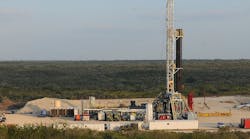Regulatory framework complications, and not water quality, limit effective management of produced water from coalbed methane wells in five western US basins, a new National Research Council (NRC) report concluded.
"At present, a challenge to the effective management of produced water is the inconsistency in the regulatory consideration and legal description of CBM produced water as a waste or as a resource and the inconsistent definition of terms such as 'beneficial use,'" it said.
Produced water volumes eventually decrease to near zero as fields mature, making their sustainability an issue for beneficial uses, the report continues. Management of CBM produced water is presently driven more by the economics of disposal and treatment costs and regulations, it indicates.
Congress noted produced water's relevance in the 2005 Energy Policy Act. It directed the US Bureau of Land Management to have the NRC, which is part of the National Academies of Science, evaluate produced water management in 6 western states.
The council formed a committee chaired by William L. Fisher, of the University of Texas at Austin's geological sciences department, with eight members of the academic, oil and gas, and environmental sciences fields, backed by five NRC members.
Relatively recent
Fisher noted in his preface to the study, which was released on Aug. 6, that while produced water is common to most oil and gas production activities, water produced with CBM has attracted recent attention because CBM production itself is relatively recent. Consequently, "the length of time to observe and understand potential effects on the environment from CBM produced water has been correspondingly brief," he said. "The relatively low salinity of some CBM produced water has allowed consideration of this water for various practical uses in the arid West. Litigation within and among states, citizens, and industry sharing CBM basins and watersheds has resulted from differing approaches to CBM produced water management," he added.
The committee focused on CBM produced water issues in the Piceance, Uinta, Powder River, San Juan and Raton basins. It reviewed documents from other sources and held three public meetings and six teleconferences. Although it assumed that oil and gas producers, regulatory agencies, water treatment companies, and private citizens normally used best practices, its investigation found occasional lapses, Fisher said.
The study also found gaps in information about CBM produced water's natural variations and connectivity among water-bearing coalbeds, other groundwater aquifers, and surface water. It cited effects on surface and groundwater resources, soils, and ecological systems, and ways to monitor and mitigate those effects. And it suggested that possible beneficial uses should be pursued further.
More Oil & Gas Journal Current Issue Articles
More Oil & Gas Journal Archives Issue Articles
View Oil and Gas Articles on PennEnergy.com

